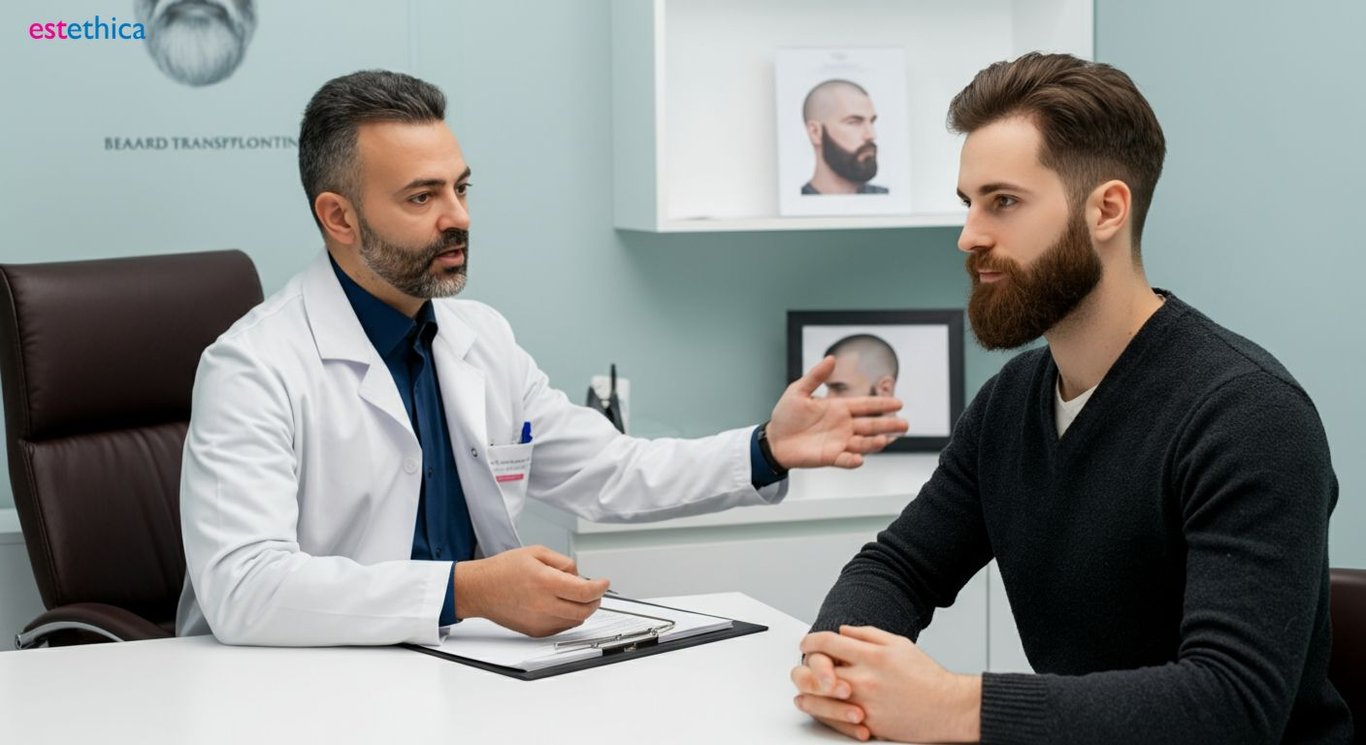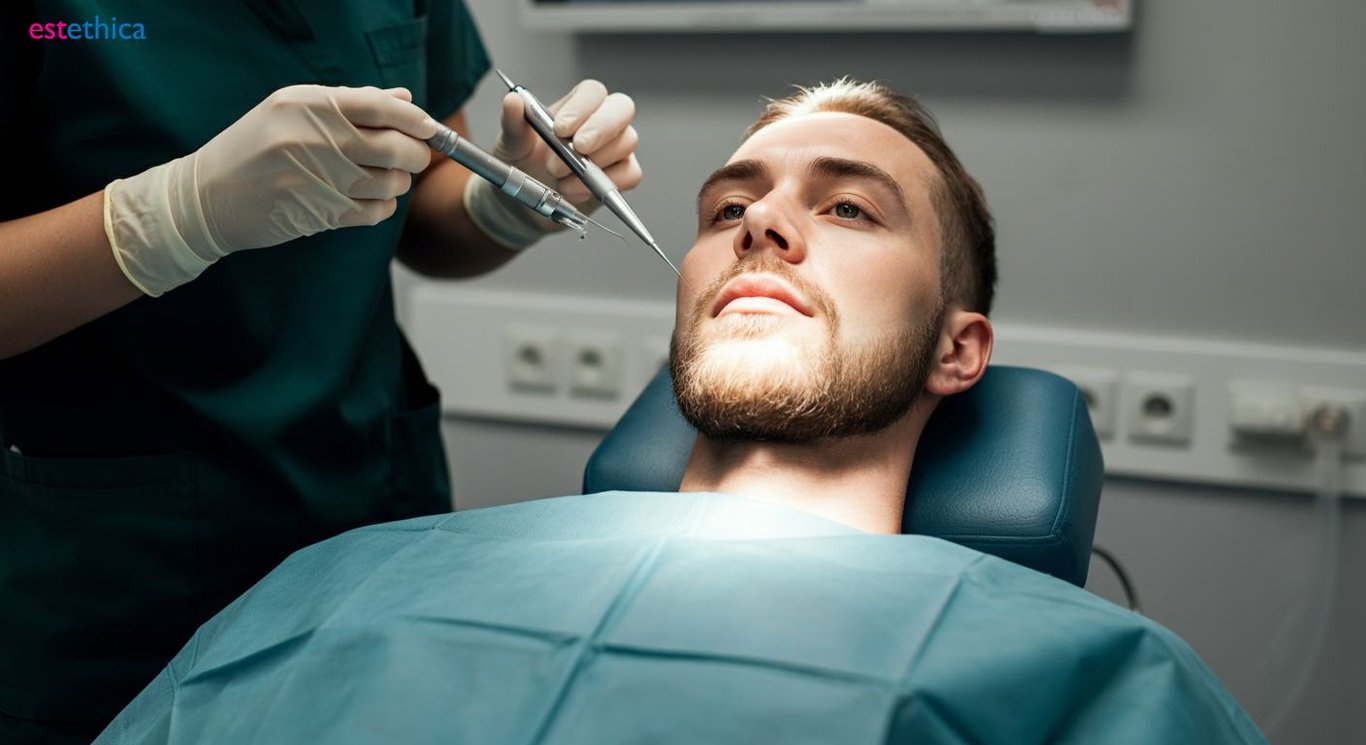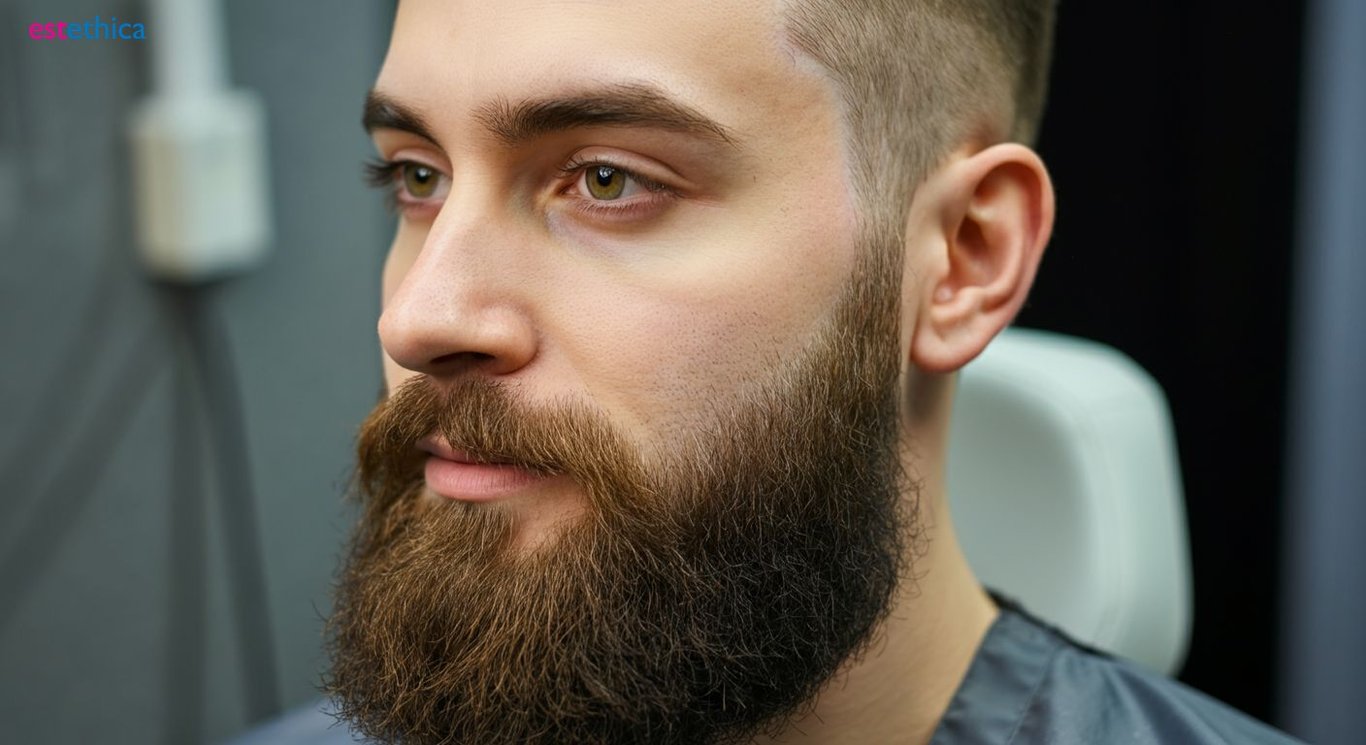Unlock Your Confidence with a Beard Transplant
Discover how a beard transplant can boost your confidence and enhance your facial aesthetics. Learn the process, find top surgeons, and ensure your new look lasts.
The pursuit of a fuller, well-shaped beard has led many to explore the transformative benefits of beard transplantation. As a hallmark of masculinity and style, a thick beard can enhance facial appearance and boost self-esteem. This comprehensive guide delves into everything you need to know about beard transplants, from understanding the basics to finding the best surgeon and ensuring optimal aftercare.
Understanding Beard Transplantation: What You Need to Know
Exploring the Beard Transplant Process
Beard transplantation is a meticulous procedure designed to enhance facial hair density. It involves extracting hair follicles from a donor site, typically the back of the scalp, and implanting them into the beard area. This process is akin to a hair and beard transplant, ensuring a natural look. The transplanted hair grows like natural beard hair, offering a permanent solution to patchy facial hair.
Key Benefits of Beard Transplantation
- Natural appearance with seamless integration into existing facial hair.
- Permanent results that boost confidence and style.
- Minimal downtime, allowing for a quick return to daily activities.
These benefits make beard transplants a popular choice for those seeking facial hair restoration. The procedure's success largely depends on the skill of the surgeon and the quality of the donor hair.
Steps Involved in a Beard Transplant
- Consultation to assess donor hair and discuss expectations.
- Extraction of hair follicles from the donor site.
- Implantation of follicles into the beard area for a fuller look.
Understanding these steps helps potential candidates prepare for the procedure. For more insights, you can discover the secrets of successful beard transplants.

How Beard Transplants Work: A Step-by-Step Guide
Understanding the Beard Transplant Procedure
The beard transplant process is a meticulous journey that begins with a detailed consultation. During this initial phase, a specialist evaluates your suitability for the procedure, considering factors like hair type and density. Once deemed a suitable candidate, the procedure involves harvesting hair follicles from a donor site, typically the back of the scalp, and implanting them into the beard area. This is done under local anesthesia, ensuring minimal discomfort. The entire process can take several hours, depending on the extent of the transplant.
Post-Procedure Expectations and Care
- Initial swelling and redness are common but subside within days.
- Transplanted hair begins to settle and grow naturally after a few months.
- Follow-up consultations ensure optimal results and address any concerns.
Understanding these post-procedure expectations helps in preparing for the recovery phase. The transplanted hair will eventually blend seamlessly with your natural beard, enhancing its fullness and appearance.
Factors Influencing Beard Transplant Success
- Quality and density of donor hair significantly impact results.
- Skill and experience of the surgeon play a crucial role.
- Adherence to post-operative care instructions ensures optimal healing.
These factors collectively contribute to the success of the beard transplant, making it a viable option for those seeking facial hair restoration. With the right approach, the procedure can offer a permanent solution to patchy or sparse beards.

Choosing the Best Beard Transplant Surgeon for You
Evaluating Surgeon Qualifications and Experience
When selecting a surgeon for your beard transplant, prioritize those with specialized expertise in facial hair restoration. A surgeon's qualifications and experience can significantly impact the success of the procedure. Look for board certifications and a history of successful outcomes. For instance, a surgeon who has performed numerous beard implants and hair and beard transplants is likely to have honed their skills, ensuring a natural and seamless result.
Factors to Consider When Choosing a Surgeon
- Specialization in facial hair restoration with proven results.
- Positive reviews and testimonials from previous patients.
- Availability of before and after photos to assess their work.
These factors can help you make an informed decision, ensuring that you choose a surgeon who can deliver the desired results.
Understanding Post-Operative Care Approaches
- Discuss the surgeon's approach to post-operative care during the consultation.
- Ensure they provide clear instructions for recovery and follow-up visits.
- Verify their availability for addressing any concerns during the healing process.
Effective post-operative care is crucial for a smooth recovery and optimal results. A surgeon who prioritizes comprehensive care can significantly enhance the overall experience and outcome of your beard transplant.

Beard Transplant Aftercare: Tips for Optimal Results
Essential Aftercare Practices for Beard Transplants
Proper aftercare is crucial for the success of a beard transplant. Initially, avoid touching the transplanted area to prevent dislodging the grafts. Use a gentle cleanser to keep the area clean and avoid direct sunlight to minimize irritation. It's important to follow your surgeon's specific instructions, as they are tailored to your individual needs. For example, some patients may be advised to use a saline spray to keep the area moist, while others might be instructed to apply a specific ointment. These practices help ensure the transplanted hair follicles remain healthy and promote successful integration.
Managing Expectations and Understanding the Healing Process
- Initial shedding of transplanted hair is normal and part of the process.
- New growth typically begins a few months post-surgery, with full results visible after a year.
- Patience is essential, as the healing process varies among individuals.
Understanding the timeline of a beard transplant can help manage expectations. While initial shedding might be concerning, it is a natural part of the process. The transplanted hair will eventually grow back stronger, contributing to a fuller beard. This gradual transformation underscores the importance of patience and adherence to aftercare guidelines.
Recommended Products and Techniques for Optimal Healing
- Use a mild, fragrance-free cleanser to maintain cleanliness without irritation.
- Apply a recommended moisturizer to prevent dryness and promote healing.
- Consider using a soft-bristled brush to gently groom the area as new hair grows.
Choosing the right products can significantly impact the healing process. A gentle cleanser helps maintain hygiene, while a suitable moisturizer can prevent dryness and support skin recovery. As new hair begins to grow, using a soft-bristled brush can help manage the beard's appearance without causing damage to the delicate follicles. These techniques, combined with professional guidance, can lead to optimal results from your beard transplant.
Advanced Beard Transplant Techniques for Natural Results
Exemplary Beard Transplant Aftercare for Optimal Healing
Frequently Asked Questions
What is a beard transplant and how does it work?
Is a beard transplant permanent?
What should I expect during the recovery process after a beard transplant?
How do I choose the best beard transplant surgeon?
Can anyone get a beard transplant?
Discover the path to 'Healthy Beauty' with estethica's expert care. Call now for your free consultation and take the first step towards a more confident you!
📞 Call for Your Free Consultation